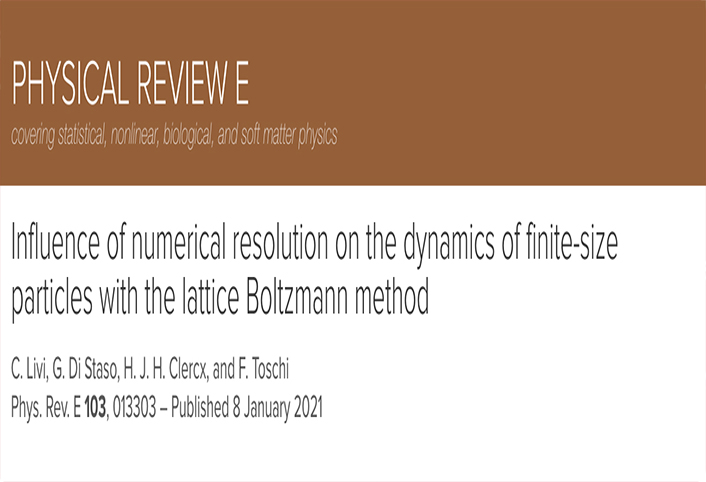
C Livi, G Di Staso, H J H Clercx, F Toschi
Phys Rev E . 2021 Jan;103(1-1):013303. doi: 10.1103/PhysRevE.103.013303.
Abstract
We investigate and compare the accuracy and efficiency of different numerical approaches to model the dynamics of finite-size particles using the lattice Boltzmann method (LBM). This includes the standard bounce-back (BB) and the equilibrium interpolation (EI) schemes. To accurately compare the different implementations, we first introduce a boundary condition to approximate the flow properties of an unbounded fluid in a finite simulation domain, taking into account the perturbation induced by a moving particle. We show that this boundary treatment is efficient in suppressing detrimental effects on the dynamics of spherical and ellipsoidal particles arising from the finite size of the simulation domain. We then investigate the performances of the BB and EI schemes in modeling the dynamics of a spherical particle settling under Stokes conditions, which can now be reproduced with great accuracy thanks to the treatment of the exterior boundary. We find that the EI scheme outperforms the BB scheme in providing a better accuracy scaling with respect to the resolution of the settling particle, while suppressing finite-size effects due to the particle discretization on the lattice grid. Additionally, in order to further increase the capability of the algorithm in modeling particles of sizes comparable to the lattice spacing, we propose an improvement to the EI scheme, the complete equilibrium interpolation (CEI). This approach allows us to accurately capture the boundaries of the particle also when located between two fluid nodes. We evaluate the CEI performance in solving the dynamics of an under-resolved particle under analogous Stokes conditions and also for the case of a rotating ellipsoid in a shear flow. Finally, we show that EI and CEI are able to recover the correct flow solutions also at small, but finite, Reynolds number. Adopting the CEI scheme it is not only possible to detect particles with zero lattice occupation, but also to increase up to one order of magnitude the accuracy of the dynamics of particles with a size comparable to the lattice spacing with respect to the BB and the EI schemes.

